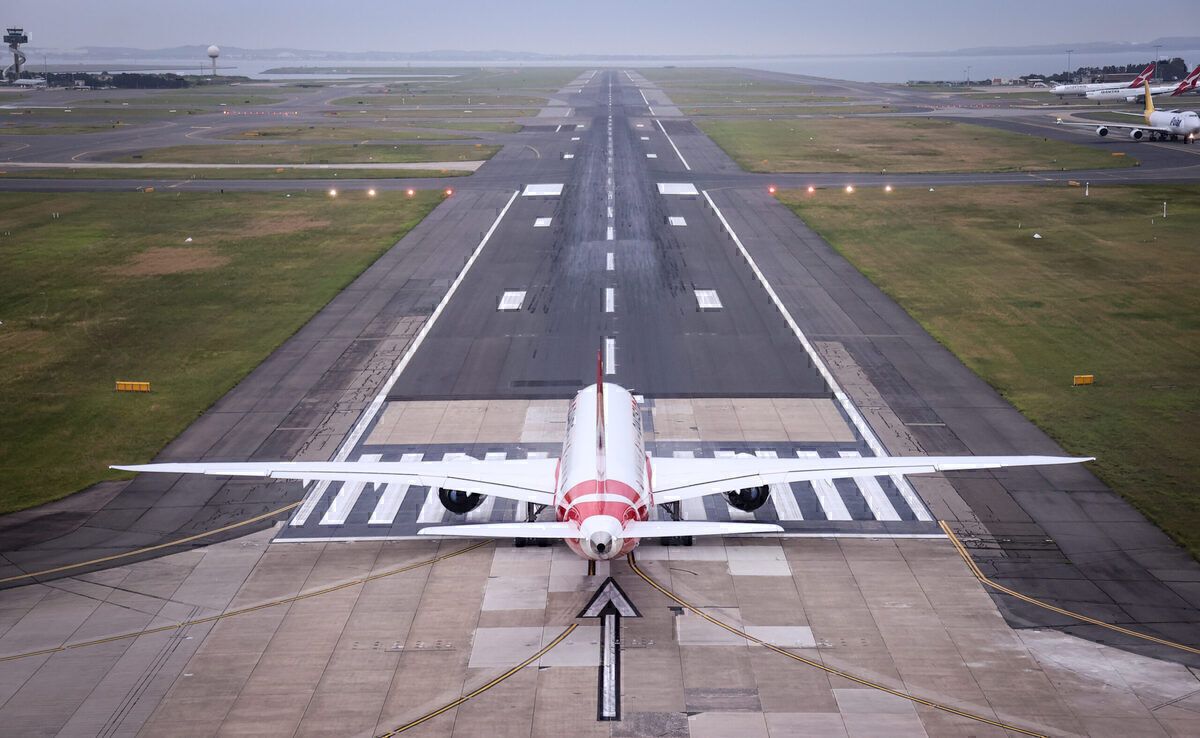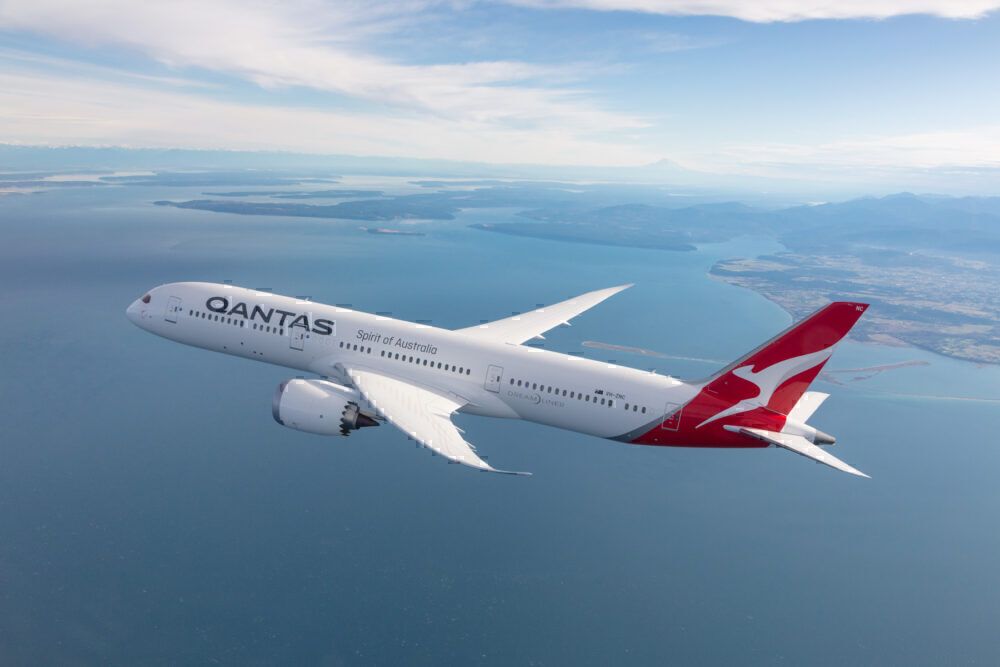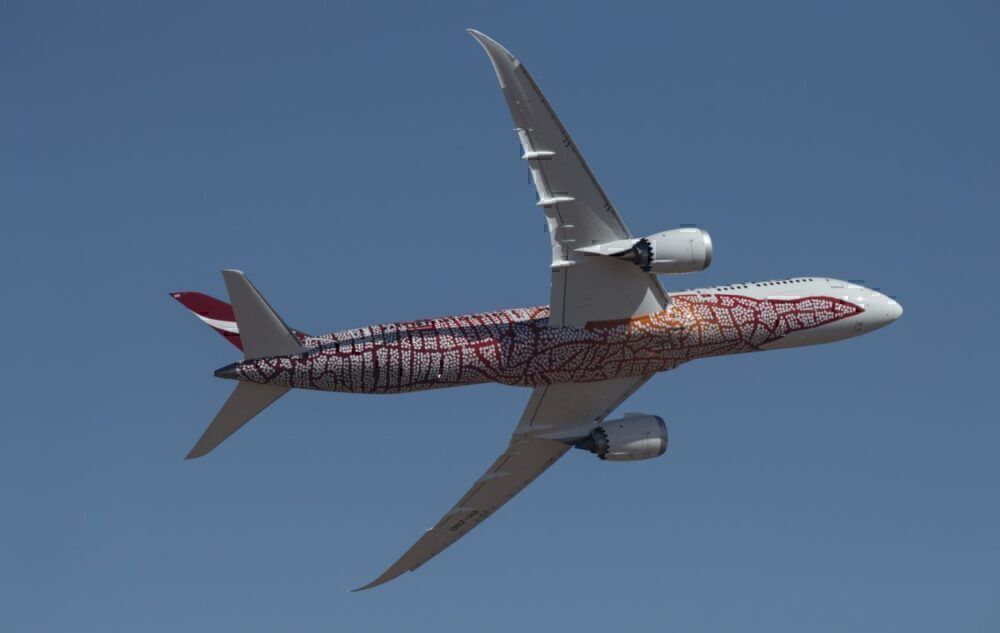The events of 2020 have had a big impact on airlines and their growth plans. With so few people traveling, many airlines are shrinking instead of expanding. Qantas is onboard with this strategy, having implemented a three-year plan to "rightsize" the business as it adjusts to decreased demand. Part of that rightsizing process is pushing back delivery time frames for new planes.
Three new Qantas Dreamliners have gone to Victorville
Last week, Simple Flying reported on a new Qantas 787-9 going straight from Boeing's Paine Field at Everett and into storage at Victorville. That plane was VH-ZNN. What caught a lot of people's attention was the incomplete paint job. The tail marked the plane as a Qantas Dreamliner, but there was no other identifying branding or livery.
It turns out two other Qantas 787-9s have quietly flown into Victorville lately. On September 18, VH-ZNM was ferried from Boeing's Everett plant to Victorville. One month later, on October 15, VH-ZNL was ferried from Everett to Victorville.
Unlike last week's VH-ZNN ferry flight, both VH-ZNM and VH-ZNL had complete paint jobs.
These three planes complete the Qantas order of 14 Dreamliners. They've taken delivery of 11 of them, the last late in 2019. The majority of these planes are also in storage in various locations.
We've reached out to Qantas to ask if they've picked up the keys to the three new Dreamliners at Victorville. In May, the airline had said it would be deferring the planes' delivery, pushing back the date to 2021.
A Qantas spokesperson told Simple Flying today that it hadn't taken delivery of the three planes. The spokesperson said its position on new plane deliveries this year remained unchanged - there won't be any. Meanwhile, the three Dreamliners will join a long list of planes held by Boeing that customers ordered but no longer immediately want or can afford.
Why are these planes heading straight to storage?
Qantas has been clear that its pandemic plan involves not taking any more airplanes for the foreseeable future. That means it needs somewhere to store them, and the desert is a great choice. However, these aren't yet Qantas planes, so is there any risk they might not be picked up at all?
The short answer is, possibly. The fact that at least one of the planes was not in complete livery suggested that these could end up with another airline. As reported in DMARGE, one reader commented,
“No livery except for the tail. No Qantas wording and the body kept clean… for resale?”
While it's possible the planes' futures are hanging in the balance, there is a paint hangar at Victorville, so they could also be getting their final touches out in the desert. DMARGE spoke to a USYD Professor of Transport and Supply Chain Management, Rico Merkert, who said,
“It is not normal to put white label planes straight into storage but what is Qantas supposed to do? Alan Joyce announced yesterday that Qantas is not planning to fly to Europe or the US before the end of next year. So what should they do with those long-haul aircraft until then other than putting them into storage or sell (perhaps, as part of a sale and leaseback deal)?”
These 'white tail' planes, which have not been officially passed on to the airline, could well be sold on. However, that's not a given, and with very little demand for them in the market right now, they'll likely just sit in the desert until demand picks back up again. When it does, Qantas will probably gladly add them to its future fleet.
White tail planes become a problem for airline manufacturers
These are known as white tail planes, a term for planes built but not sold. Generally, a white tail plane is bad news for the manufacturer. Like an unsold car in a car yard, it needs to be cared for and maintained, costing money while earning no revenue for the manufacturer.
Occasionally, opportunistic airlines will cast their eye over white tail planes, looking for a bargain. This month, it was rumored that Southwest Airlines was looking at taking 30 white tail Boeing 737 MAXs. Boeing reportedly has around 450 aircraft that have been built but not delivered. If Southwest Airlines goes ahead with the deal, it will make a dent in Boeing's list of white tail planes, but still leaves them with many to offload.
While manufacturers like Boeing and Airbus will always have to deal with some white tail planes, 2020 has seen the numbers of them soar. It's no mystery why. Plummeting travel demand has had a big impact on airline revenues. To offset this and survive, airlines have slashed costs and capital expenditure. High on the list of costs that can be deferred are new planes.
"Airline revenues have collapsed. Entire fleets are grounded. And the world’s biggest carriers are taking extreme actions just to survive," said Qantas CEO Alan Joyce mid-year.
In the scheme of things, hanging onto three Dreamliners won't make or break Boeing. They've got bigger problems on their hands than Qantas. But it is emblematic of a bigger problem in the airline industry that particularly impacts the manufacturers - the oversupply of new planes.



